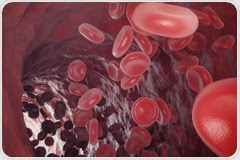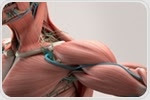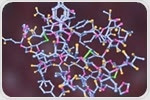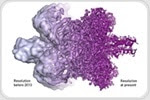|
|
| | February 5, 2019 | |
| | |
| | The latest biochemistry news from AZoNetwork | |
|
|
 |
| |  Rapid Elemental Characterisation of Biological Samples Rapid Elemental Characterisation of Biological Samples
This webinar, taking place Tuesday 12th February, 4PM GMT, will demonstrate the complementary potential of analytical SEM for fast and precise elemental characterisation of ultrastructural features in biological samples, without the need for specific labelling. Speakers will introduce recent developments in EDS, enabling nanometre scale chemical analyses in a matter of minutes, and demonstrate how the results complement information from both TEM and fluorescence microscopy. Examples will be shown from various samples, including diseased and healthy erythroblast cells.
| |
|
|
|
|
|
 |
| |
 An interview with Dr. Nicole Polinski from The Michael J. Fox Foundation for Parkinson's Research (MJFF) and Dr. Elnaz Atabakhsh from Abcam, discussing the importance of developing biomarkers for Parkinson’s and the partnership between MJFF and Abcam. An interview with Dr. Nicole Polinski from The Michael J. Fox Foundation for Parkinson's Research (MJFF) and Dr. Elnaz Atabakhsh from Abcam, discussing the importance of developing biomarkers for Parkinson’s and the partnership between MJFF and Abcam. | |
|
| |
 The most effective way of determining protein structure from sequence alone is by using computational methods. This is based on direct comparison of the unknown protein sequence with the sequence of a protein whose structure is known. The most effective way of determining protein structure from sequence alone is by using computational methods. This is based on direct comparison of the unknown protein sequence with the sequence of a protein whose structure is known. | |
|
| |
 Phage display begins by incorporating the protein of interest into the external surface of the bacteriophage. This is done by splicing the segment of normal DNA that encodes for the protein into the DNA sequence of the bacteriophage which encodes for the phage coat proteins. Phage display begins by incorporating the protein of interest into the external surface of the bacteriophage. This is done by splicing the segment of normal DNA that encodes for the protein into the DNA sequence of the bacteriophage which encodes for the phage coat proteins. | |
|
| |
 Electrochemistry refers to the study of the chemical processes that are responsible for the movement of electrons in electricity. The history of electrochemistry is replete with several major discoveries since the sixteenth century. Electrochemistry refers to the study of the chemical processes that are responsible for the movement of electrons in electricity. The history of electrochemistry is replete with several major discoveries since the sixteenth century. | |
|
| |
 Metabolomics is the study of metabolites in a cell, tissue, organ, or organism. The variety and concentration of particular metabolites within the metabolome may be indicative of disease, toxicity, or used as a predictive marker for future health concerns. Nuclear magnetic resonance (NMR) spectroscopy is commonly used to identify and quantify metabolites in a sample. Metabolomics is the study of metabolites in a cell, tissue, organ, or organism. The variety and concentration of particular metabolites within the metabolome may be indicative of disease, toxicity, or used as a predictive marker for future health concerns. Nuclear magnetic resonance (NMR) spectroscopy is commonly used to identify and quantify metabolites in a sample. | |
|
| |
 Researchers have shown that measures of biochemical hypoglycemia in fingerstick blood samples are associated with an increased risk of severe hypoglycemic events. Researchers have shown that measures of biochemical hypoglycemia in fingerstick blood samples are associated with an increased risk of severe hypoglycemic events. | |
|
|
|
|
|







No hay comentarios:
Publicar un comentario